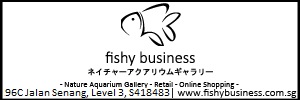Carl,
Good question.
I had used this method before, it is working. The only concern about this method of dissolving CO2 is:
1) The acidity of the water going into the canister where benificial bacterial is living
2) The efficiency of CO2 dissolve rate
So, before you embark on it, there is a few considerations :
1) The tank size
2) The canister filter size, flowrate and media used
3) Rate of CO2 injection
The tank size determines the CO2 injection rate and the filter flow rate affect the concentration of the CO2 being flow into the canister. The filter size and media affect the efficiency of the CO2 dissolve rate and air traps.
Example
For my tank:
1) 360 litre (nett water volume)
2) Eheim 2080 with media capacity of 7.2 litre and flow rate of 1050 litre/hr
3) CO2 injection rate of 6 bubbles per second rate
Results:
With CO2 injected at the filter's inlet, the acidity going into the filter is about 6~6.2 which is fine to the bacteria. The water column is about 6.2~6.4. The efficiency of the CO2 dissolve rate is about 90% (guess work), there is still bubbles comming out of the outlet.
I would say it is the right balance and it works fine.
End.
++
Tips. Use only 1 layer of the fine filter floss because it traps the undissolved CO2 impurities (mainly Nitrogen). Or better, don't use it at all.










 Reply With Quote
Reply With Quote

 hey kids - dont do this at home by yourselves, ask your parent or guardian first !!
hey kids - dont do this at home by yourselves, ask your parent or guardian first !!  :wink:
:wink: 
Bookmarks